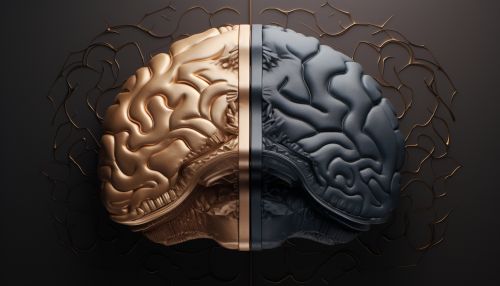Dual Process Theory
Introduction
Dual Process Theory (DPT) is a cognitive psychological model proposing two distinct cognitive systems in the human brain: one that is intuitive and automatic, and another that is reflective and deliberative. These systems are often referred to as System 1 and System 2, respectively. The theory has been influential in various fields such as psychology, economics, and philosophy, and has been used to explain a wide range of phenomena from decision-making to social behavior.


Origins and Development
The origins of DPT can be traced back to the early work of psychologists such as William James and Sigmund Freud, who proposed that human cognition could be divided into conscious and unconscious processes. However, the modern form of DPT was largely developed in the late 20th century, with significant contributions from psychologists such as Daniel Kahneman and Amos Tversky, who were interested in understanding the cognitive processes underlying human decision-making.
System 1 and System 2
According to DPT, System 1 is the intuitive, automatic cognitive system. It operates quickly and without conscious effort, using heuristics or mental shortcuts to make decisions. This system is often responsible for our initial reactions and impressions. It is also associated with emotional responses and is thought to be evolutionarily older.
System 2, on the other hand, is the reflective, deliberative cognitive system. It is slower and requires conscious effort to operate. This system is responsible for tasks that require logical reasoning, calculation, and concentration. It is also associated with the ability to override or control automatic responses generated by System 1.
Applications and Implications
DPT has been applied in various fields to explain a wide range of phenomena. In psychology, it has been used to explain biases in decision-making and judgment. In economics, it has been used to challenge the traditional assumption of rationality in economic behavior. In philosophy, it has been used to explore questions about free will and moral responsibility.
The theory also has important implications for understanding and addressing social and behavioral problems. For example, it can help explain why people often fail to act in accordance with their long-term goals or values, and it can inform interventions designed to promote healthier or more sustainable behaviors.
Criticisms and Controversies
Despite its wide influence, DPT has also been subject to various criticisms and controversies. Some critics argue that the distinction between System 1 and System 2 is overly simplistic and does not accurately reflect the complexity of human cognition. Others question the empirical evidence for the theory, arguing that it is often based on indirect measures and assumptions rather than direct observation of cognitive processes.
Conclusion
In conclusion, DPT is a prominent cognitive psychological theory that has significantly influenced our understanding of human cognition and behavior. Despite its limitations and controversies, it continues to be a valuable tool for researchers and practitioners in various fields.
